
Summer 2014
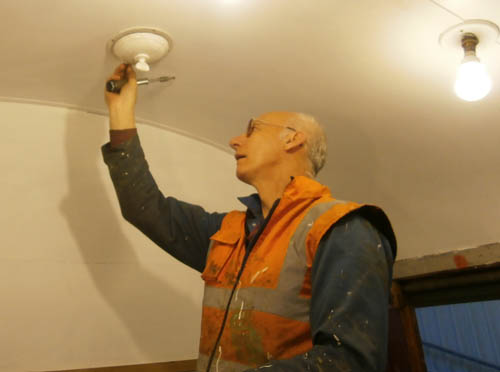
After all the ceiling lining boards were up and the edging mouldings fitted and painted with
intumescent paint, Al MacPhee applied undercoat to the ceilings and upper walls of the compartments and to the
ceiling in the corridor. This was followed by a coat of eggshell on the ceilings and gloss on the upper parts of
the compartment bulkheads. At this time, the roof ventilators were screwed into place.
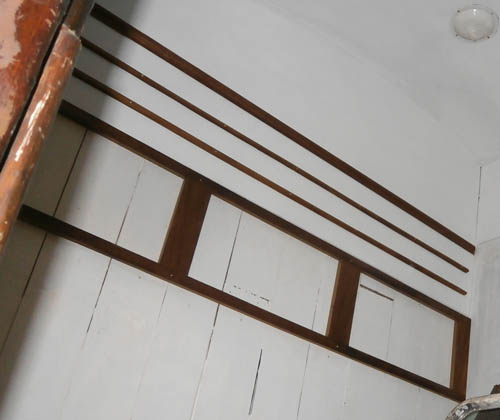
Manufacture of the corridor upper matchboard panels took several weeks, partly because we ran out of recycled matchboard
so had to make our own. Another problem was that the recovered teak from Helensburgh had the nasty habit of warping badly
when the large section stair treads (which is how they were recovered) were sawn up to form the smaller section parts
for the frames of the panels.
In the corridor, the matchboard panels which are attached above the compartment sliding doors were trial fitted
to make sure the combined length of all the panels was exactly the same as the length of the corridor! The curved panels
which are attached at both ends of the corridor were rather tricky to make, but look the part when screwed into place.
The long mouldings which form the continuous pelmet above the corridor sliding doors were manufactured by Don. After cutting
the teak at an angle to roughly match the section of the moulding, 4 passes were required through the spindle moulding machine to
obtain the correct profile.
The 3 swan-necked lamps for the corridor have been delivered and fitted in place high on the corridor partition.
Although these are not original pattern, they are fairly close and definitely look good in position.
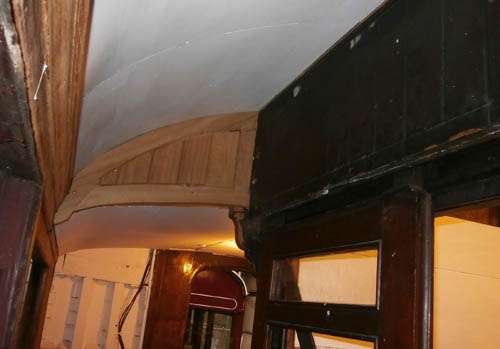
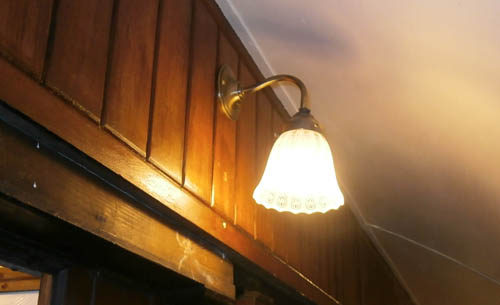
Part of the lifting exercise to repair corrosion on the top side of the chassis involved the removal of the large number of nuts and bolts which secure the wooden body on the solebar members. Undoing the nuts was not going to be an easy task, but the process had to be started somewhere. The photo below shows the first loosened nut.
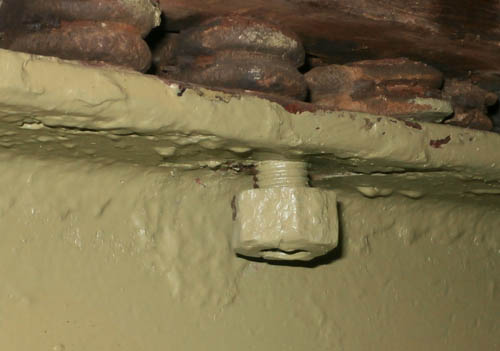
Above the loosened nut you can probably see the grommet shaped rubbers which cushion the body. These have to be forced into new stainless steel plates (received in September) in sets of 6 or 8 for each of the bolt locations. It takes quite a while to force even one into its plate, so there will be a deal of cursing before all 672 rubbers are safely in place. In the photograph above you can see a set of old support rubbers, but no support rubber plate as this has rusted away.
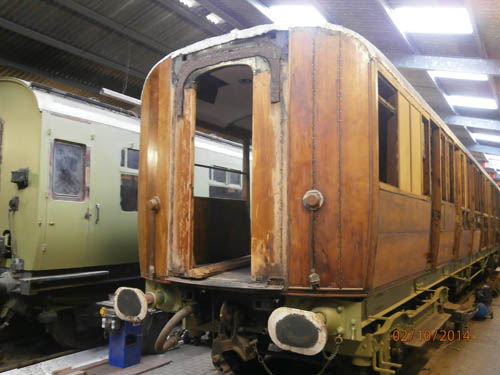
At the end of September, Ian Boettcher and Dave Simpson spent 2 days removing the gangways from both ends of the coach. One end came off relatively easily, but the other end took a lot of persuading. This was thought to be because the coach is leaning to the south side - not sure why this should be as all the electrics and batteries are on the north side. Now that the gangways are off, the business of removing all the body securing bolts can begin in earnest.